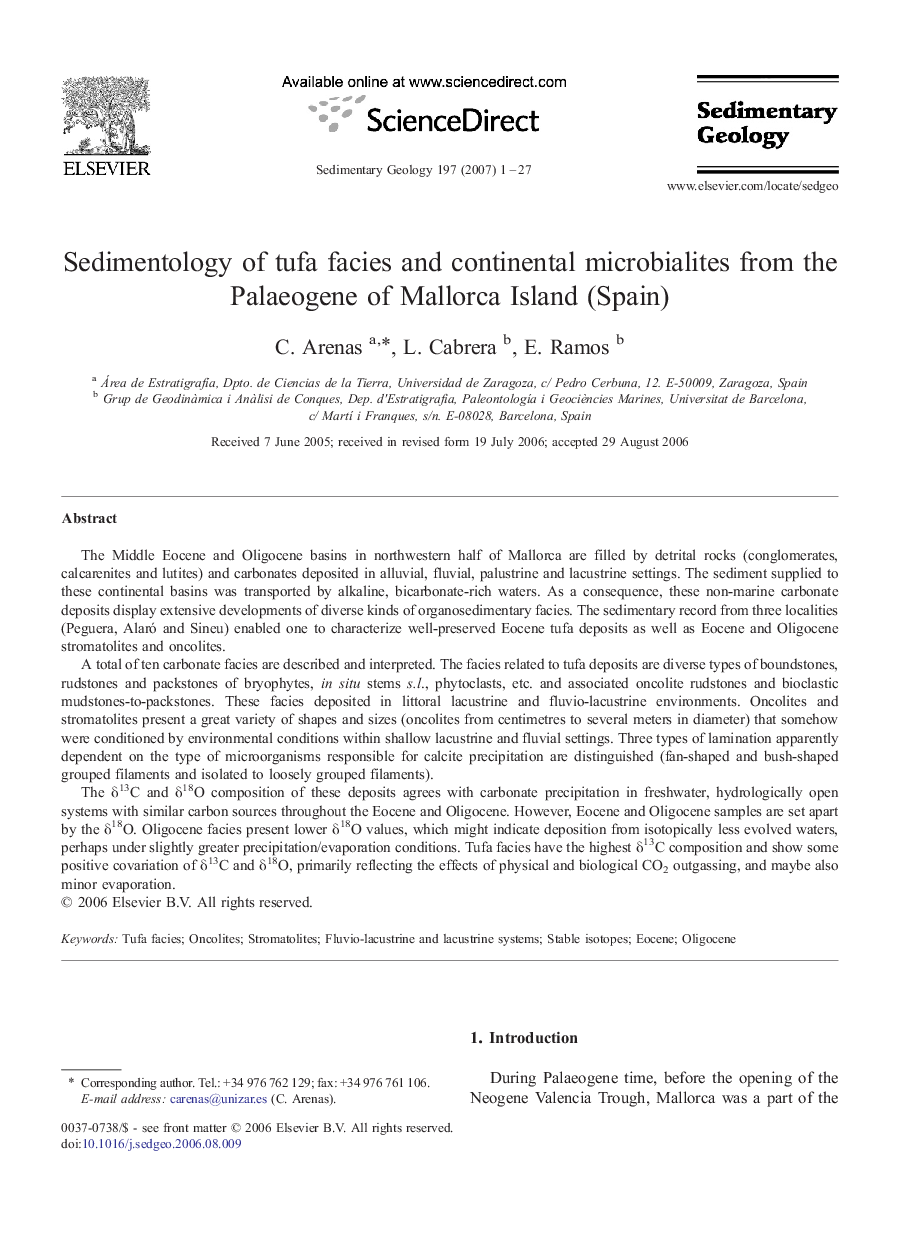| Article ID | Journal | Published Year | Pages | File Type |
|---|---|---|---|---|
| 4690937 | Sedimentary Geology | 2007 | 27 Pages |
Abstract
The δ13C and δ18O composition of these deposits agrees with carbonate precipitation in freshwater, hydrologically open systems with similar carbon sources throughout the Eocene and Oligocene. However, Eocene and Oligocene samples are set apart by the δ18O. Oligocene facies present lower δ18O values, which might indicate deposition from isotopically less evolved waters, perhaps under slightly greater precipitation/evaporation conditions. Tufa facies have the highest δ13C composition and show some positive covariation of δ13C and δ18O, primarily reflecting the effects of physical and biological CO2 outgassing, and maybe also minor evaporation.
Related Topics
Physical Sciences and Engineering
Earth and Planetary Sciences
Earth-Surface Processes
Authors
C. Arenas, L. Cabrera, E. Ramos,
